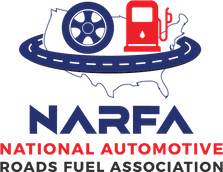As 2014 kicks off and many new benefit changes go into effect, it’s a great time for employers to reevaluate employee benefits. Here are some things you can do to help ensure a successful year:
Clarify Budget Expectations
Make sure you communicate new and expected health care costs to your senior management team at the start of the year. When new costs arise, they will be met more capably if they are anticipated. Staying informed of health care reform changes and communicating the projected costs is key to success.
Check Grandfathered Status
If have a grandfathered health insurance plan, you may not have made significant changes in 2013. In 2014, make sure you understand all of the rules before making changes to your plan. Losing grandfathered status could incur significant changes when additional compliance factors are enacted.
Get an Industry Third-party Benefits Administrator
Finding a third-party benefits administrator can save you time and money by taking advantage of industry experts who are already up-to-date on the complex changes of the health care reform landscape. Finding a benefits administrator specific to your industry increases how much you’ll be able to take advantage of all nuances.
Ensure FMLA Compliance
With new legislation including the Affordable Care Act and Supreme Court rulings on DOMA, some Family Medical Leave Act (FMLA) requirements have changed. Make sure you are up to date on all your forms and posting requirements.
Offer Flexible Work Arrangements
The SHRM Research Spotlight on Future HR Challenges and Talent Management Tactics found that providing flexible work arrangements ranked #1 in the most effective tactics in attracting, retaining, and rewarding the best employees over the next 10 years. Engaged and happy employees have been shown to positively impact employers, both in employee retention and quality of service to your client base.
Understand the Impact of Benefits
Recognize the role benefits play in employee satisfaction and retention. According to MetLife’s 11th Annual Study of Employee Benefit Trends, a strong correlation exists between benefits and employee loyalty and satisfaction. Employees who are satisfied with their benefits demonstrate increased company loyalty and are often more willing to help shoulder benefit costs, especially when more choices are offered.
Consider Employee Cost Sharing
Employee cost sharing is one-way employers are offsetting rising health care costs. The Kaiser Family Foundation conducted a 2013 Employer Health Benefits Survey and found that as overall healthcare costs increase, employees are sharing a higher percentage of their health benefits costs—especially in smaller companies.
Encourage Active Employees
For employers who shoulder much or all of their employees’ health care premiums, consider this: according to the 2013 Towers Watson/National Business Group on Health Employer Survey on Purchasing Value in Health Care, average total healthcare costs per active employee are only expected to increase 5.1% in 2013, the lowest increase in 15 years.
Find a Plan with a Wellness Program
Many health plan providers are taking advantage of new incentives such as maximum possible rewards increases through adding nondiscriminatory wellness programs to group health plans. These types of plans encourage preventive wellness, discourage tobacco use and reward active employees which, as previously stated, cuts down on long-term health care costs.
Have questions about your specific benefits coverage? Contact us today to find out what NARFA can do to for your 2014 benefits.
Recent Posts
The U.S. Department of Labor Announces Proposed Rule To Protect Indoor, Outdoor Workers From Extreme Heat
The U.S. Department of Labor has proposed a new rule aimed at protecting workers from extreme heat hazards. This initiative seeks to safeguard approximately 36 [...]
Supreme Court Overturns Chevron Deference: What It Means for Workplace Safety and Regulation
The landscape of federal regulation is set for a seismic shift following a recent Supreme Court decision. On June 28, in Loper Bright Enterprises, et [...]
Navigating the Compliance Maze: How NARFA Simplifies Employee Benefits for Automotive and Trade Industries
In today's complex regulatory environment, businesses in the automotive, roads, fuel, and related industries face unprecedented challenges in managing employee benefits. Recent studies show that [...]



